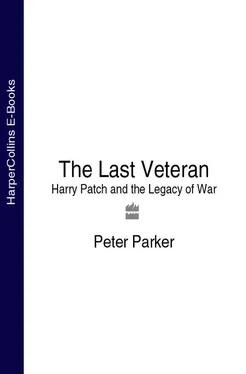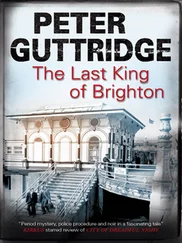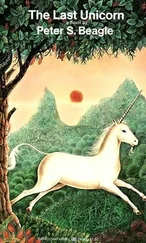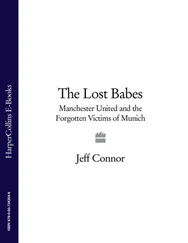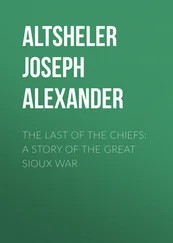Once the service was over and the congregation had stepped out into the late morning, the filled grave was covered with Railton’s flag and surrounded by Flanders poppies and wooden railings to protect it from the thousands of people who would visit the Abbey to pay their respects. Here, at last, veterans were given or had somehow achieved priority, and the first people to enter the Abbey after the service had ended were disabled former servicemen, along with their unemployed comrades who had been denied a place in the funeral procession. By 11 p.m., when, an hour later than originally planned, the Abbey doors were closed for the night, some 40,000 people had filed past the grave, round which a guard of honour with bowed heads and reversed rifles kept constant vigil. It was clear that the three days originally allotted for the people to pay their respects before the tomb was properly sealed would be entirely inadequate. Huge queues formed long before the Abbey opened again the following morning, and there were similarly long lines of people at the Cenotaph, where it was estimated that 100,000 wreaths were laid within three days of its unveiling. From Trafalgar Square to Parliament Square, people in their thousands waited patiently and moved slowly forward, their places immediately filled as others joined the queues. They came from all over the country, and the queues grew even longer as the time approached for the Abbey to be closed so that a temporary slab could be placed over the tomb. Even the Dean’s revised timetable could not accommodate those taking part in what had been dubbed ‘the Great Pilgrimage’, and it was not until 4 p.m. on Thursday, 18 November, a week after the funeral, that the doors of the Abbey were finally closed so that the tomb could be properly sealed. Once this was done, the pilgrimage continued: when the Abbey opened again the queues were almost as long as they had been in the week following Armistice Day.
‘Wonderful to think of this unknown boy, or man, lying here with our kings, our captains, our prophets, and our priests,’ one commentator wrote. ‘His fame is greater, too; he is Everyman who died in the war. No matter how many mothers believe that he is theirs, they are right; they are all of them right – for he is every mother’s son who did not come home from France.’ This may have been the intention, but everyone knew that the body was not that of any of the thousands who had been lost at sea or in theatres of war other than the Western Front. Even those who were not privy to the negotiations that took place between the military and ecclesiastical authorities about selecting the Unknown Warrior must have realised that the chances that the person they had lost was now lying among the most illustrious of the land were slender. There was also the question of just how representative of the Empire’s million dead the Warrior really was. Although no one actually quite voiced it, the general assumption was that this ‘British Warrior’ was of pure Christian descent. Some idea of the sort of person many imagined he might be was given by Arthur Machen (the creator of the ‘Angels of Mons’ myth) writing in the London Evening News on the day of the funeral. In an article he fancifully called ‘Vision in the Abbey: The Little Boy Who Came to the King by Way of Great Tribulation’, Machen imagined a boy playing in an idealised English countryside. ‘I see the little child quite clearly,’ he insisted, ‘and yet I cannot make out how he is dressed. For all I can see he may be the squire’s boy, or the parson’s, or the cottager’s son from that old whitewashed, sixteenth-century cottage which shines so in the sunlight. Or I am not quite sure that he is not a town-lad come to stay with relations in the country, so that he might know how sweet the air may be.’ What this little boy was clearly not was a member of the teeming immigrant communities of the poor inner cities, many of whom fought and died for their country. He nevertheless grows up, goes to war, is killed, and becomes the Unknown Warrior.
A suspicion that the authorities at any rate did not really believe that the person they had buried in Westminster Abbey, that Christian repository of the great and the good of the land, could be anything other than a son of the Church of England was confirmed when the following year S.I. Levy, Principal of the Liverpool Hebrew Schools, wrote a letter to Dean Ryle pointing out that the tombstone had carved on it the line ‘In Christ shall all be made alive’. As Mr Levy politely pointed out, the religion of the Unknown Warrior was as much a mystery as his identity. Many Jews, he reminded the Dean, had fought and died in the war and were being mourned in Jewish homes across the land. ‘Among the unbounded wealth of biblical inspiration a line could have been selected which would not have offended the living religious susceptibilities of the unknown warrior, whatever his faith may have been,’ Mr Levy suggested, whereas the chosen line did ‘not meet the spiritual destinies of both Jew and Gentile’. Dean Ryle was not accustomed to being challenged and replied testily that given that the Unknown Warrior was lying in a Christian church it seemed only reasonable that one of the five texts selected for his tombstone should carry a Christian message. For all he knew, the Dean added, the Unknown Warrior might even have been a Muslim: ‘We cannot hope to please everyone.’
Exactly who was lying in Westminster Abbey did not in the end greatly matter. The Unknown Warrior was intended as a symbol and largely accepted as one. The element of uncertainty over his identity may, however, explain the otherwise odd circumstance that even after all the pomp and ceremony that surrounded the Unknown Warrior’s burial, it was an empty tomb which remained the main focus of a grieving nation. People continued to lay huge numbers of wreaths at the Cenotaph every week throughout the twelve months following the funeral. These numbers swelled at Christmas, which was unseasonably mild in 1920, and The Times reported that on Boxing Day ‘There were more people there […] than on any day since the Great Pilgrimage came to an end. The base was nearly surrounded by wreaths of evergreen and holly, and the pile reached nearly to the top of the pedestal.’ Even a year later on 11 November 1921, when the Unknown Warrior’s temporary grave slab was replaced by a permanent one of Belgian marble inlaid with brass lettering made from melted-down bullet casings gathered from the battlefields, The Times insisted that ‘It was surely at the Cenotaph that the nation’s undying gratitude to its glorious dead found […] its fullest and most complete expression’. The heavens appeared to agree. Although a mist ‘obscured the vista’ on this ‘perfect November morning’, ‘immediately over the Cenotaph the sky was pure pale blue’.
The commemoration of the dead had certainly gripped the country’s collective imagination, but many of those who had survived the war felt themselves forgotten. Among those laying wreaths that November morning was a delegation of ex-servicemen and their families from Poplar in the East End of London. Some of these wreaths bore inscriptions which ‘the police were obliged to censor as being likely to be objectionable to those who mourned at the shrine’. Among the inscriptions deemed offensive were ‘To the dead victims of Capitalism from the living victims of Capitalism’ and ‘To the dead not forgotten from the living forgotten’. While some of the veterans wore their war decorations, one had pinned to his coat the pawn ticket for which he had exchanged his medals.
A Nation Remembers? 1921–1939
Have you forgotten yet? …
For the world’s events have rumbled on since those gagged days …
Читать дальше
